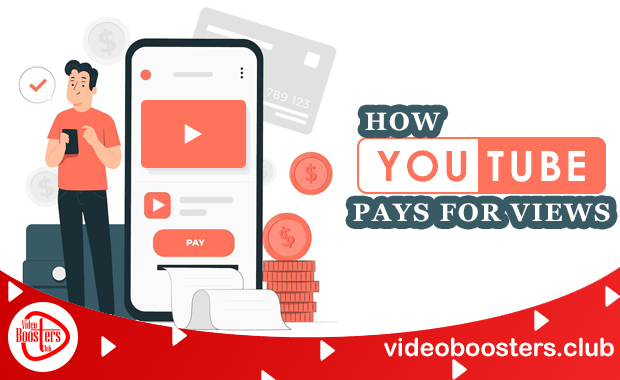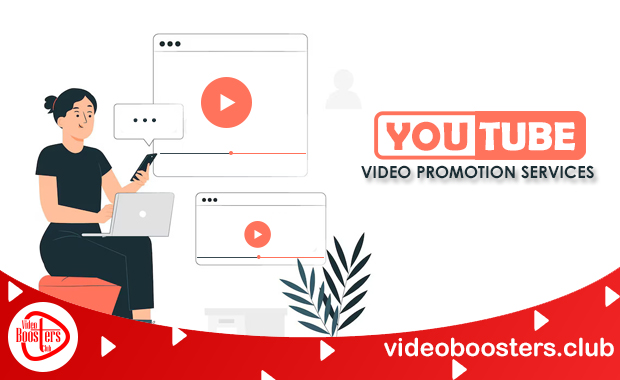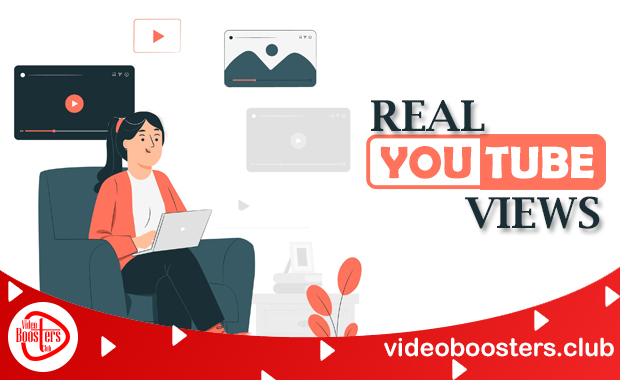
YouTube is now one of the biggest platforms for making and watching videos, with billions of people tuning in for hours every day. Many creators wonder, “How YouTube pays for views” and how they can turn their creative efforts into a lucrative source of income. If you’re curious about the mechanics of YouTube’s payment structure and how you can benefit from it, you’re in the right place.
Monetizing YouTube videos has changed the way individuals and businesses think about online content. From ad revenues to sponsorships, YouTube offers diverse earning opportunities for its creators. However, these earnings rely on YouTube’s policies and the way it calculates payments for views, watch time, and user engagement.
This article will guide you through the ins and outs of how YouTube pays for views, explaining the platform’s policies and sharing tips to maximize your earnings. Whether you’re a beginner or an experienced creator, understanding these policies can make a big difference in your revenue.
Understanding The Policies on How YouTube Pays For Views
YouTube Partner Program (YPP)
To start earning on YouTube, creators must join the YouTube Partner Program (YPP). The YPP is designed to ensure that creators produce high-quality, original, and engaging content. To qualify for the program, creators must meet the following criteria:
- Have a minimum of 1,000 subscribers on their channel.
- Accumulate at least 4,000 hours of valid public watch time within the past 12 months.
- Adhere to YouTube’s Community Guidelines and monetization policies, which promote ethical and advertiser-friendly content.
Once approved, creators gain access to monetization features such as ads, channel memberships, Super Chats, and more. It’s crucial to note that maintaining YPP eligibility requires ongoing compliance with YouTube’s policies.
The Role of Views in Monetization
A common misconception is that creators get paid simply based on the number of views their videos receive. While views are a factor, YouTube monetization depends on several other variables:
Ad Impressions
Revenue is generated when viewers see ads on a video. This is tracked using Cost Per Mille (CPM), which refers to the cost advertisers pay for 1,000 ad impressions.
Ad Clicks
Some advertisers opt for a Cost Per Click (CPC) model, where revenue is earned only when viewers click on ads.
Audience Demographics
Earnings fluctuate based on the geographic location of viewers. Advertisers in countries like the United States, Canada, and the United Kingdom often pay higher CPM rates compared to advertisers in developing countries.
Content Type and Niche
Videos in high-value niches like finance, technology, and health tend to attract higher-paying advertisers, resulting in greater revenue potential.
Important Metrics: CPM and RPM
Understanding CPM and RPM is essential for tracking earnings:
CPM (Cost Per Mille)
This metric represents the amount advertisers pay for 1,000 ad impressions on a video. CPM rates vary widely, ranging from $1 to $10 or more, depending on the audience and content niche.
RPM (Revenue Per Mille)
This metric indicates a creator’s actual earnings per 1,000 views after YouTube’s 45% share of ad revenue is deducted. RPM typically ranges from $0.50 to $5 or more.
| Metric | Definition | Average Range |
| CPM | Cost paid by advertisers per 1,000 ad impressions | $1 – $10+ |
| RPM | Earnings per 1,000 video views after YouTube’s cut | $0.5 – $5+ |
Additional Revenue Streams
YouTube creators have access to multiple monetization options beyond ad revenue:
- Super Chats & Stickers: Viewers can pay to highlight their messages during live streams, creating additional earning opportunities.
- Channel Memberships: Subscribers can opt for monthly memberships, offering exclusive perks such as badges, emojis, or member-only videos.
- Merchandise Shelf: Creators can showcase and sell branded merchandise directly through their channel, integrating it with their video content.
Adherence to Policies
Revenue generation is tightly linked to YouTube’s strict adherence policies. Violations such as uploading copyrighted content, spreading misinformation, or creating harmful or misleading videos can result in demonetization or even channel termination. Creators must regularly review YouTube’s policies to ensure long-term sustainability and income stability.
Tips To Make Your Videos Go Viral And How To Maximize Your Earning on YouTube
1. Create High-Quality, Engaging Content
Producing captivating content is the foundation of a successful YouTube channel. Start by investing in reliable equipment such as cameras and microphones to ensure high-quality visuals and clear audio. A well-lit and professionally shot video can enhance viewer engagement significantly.
Plan your videos thoroughly by scripting and storyboarding your ideas. A structured approach keeps the content cohesive and ensures you deliver value to your audience. Additionally, take time to edit your videos professionally using tools like Adobe Premiere Pro or Final Cut Pro to create polished, visually appealing content. Adding graphics, transitions, and background music can also elevate the overall quality of your videos.
2. Optimize for SEO
YouTube SEO plays a vital role in getting your videos discovered by the right audience. Start by identifying and incorporating relevant keywords into your YouTube video titles, descriptions, and tags. Write compelling video descriptions that include keywords naturally and provide a clear summary of your video.
YouTube Thumbnails are another critical factor in boosting click-through rates. Design eye-catching thumbnails with bold text and contrasting colors to grab viewers’ attention. Including captions or subtitles in your videos can further improve accessibility, reach, and retention by catering to international or hearing-impaired audiences.
3. Leverage Analytics
YouTube Studio offers detailed analytics that can help you refine your content strategy. Monitor your watch time, as videos with longer watch durations are favored by YouTube algorithm and more likely to be recommended. Analyze your traffic sources to understand whether viewers are finding your content through search, suggested videos, or external links.
Pay attention to audience demographics to tailor your content to the preferences of your viewers. For example, knowing your audience’s age, gender, and geographic location can help you produce videos that resonate better with them and attract more engagement.
4. Collaborate With Other Creators
Collaborations are an excellent way to expand your audience and tap into new viewer bases. Partner with creators who share a similar niche but have slightly different audiences. This cross-promotion introduces your content to potential subscribers and creates opportunities for creative growth. Joint projects, guest appearances, or collaborative challenges are great ways to engage audiences.
5. Promote Your Channel on Social Media
Social media platforms like Instagram, TikTok, Twitter, and Facebook are powerful tools for promoting your YouTube channel. Share snippets, behind-the-scenes content, or highlights from your videos to entice followers to watch the full content on YouTube. Engage with your audience through comments, polls, and interactive posts to build a loyal fanbase.
Email marketing is another underutilized tool for channel promotion. Send newsletters with updates about new video uploads or upcoming projects to keep your subscribers engaged and informed.
6. Post Consistently
Consistency is key to building a strong presence on YouTube. Establish a regular upload schedule and stick to it to maintain viewer interest and trust. For example, posting videos weekly or biweekly can help set expectations for your audience. Use a content calendar to plan topics and ensure you stay ahead of your schedule.
7. Diversify Revenue Streams
Relying solely on ad revenue can be limiting. Explore alternative earning opportunities like affiliate marketing, brand sponsorships, and merchandise sales. Partner with brands that align with your niche and create authentic sponsored content. Include affiliate links in your video descriptions to earn commissions from product sales.
Additionally, consider creating exclusive content for platforms like Patreon or offering paid workshops to monetize your expertise further. Diversifying your revenue streams not only increases income but also safeguards against fluctuations in ad revenue.
Conclusion
Understanding how YouTube pays for views is essential for creators aiming to make the most of their channels. By adhering to YouTube’s policies, focusing on high-quality content, and optimizing for SEO, you can increase your earnings and build a sustainable career on the platform.
Remember, success on YouTube requires patience, consistency, and a deep understanding of your audience. Use the tips shared in this article to grow your channel and maximize your revenue. With the right approach, your YouTube journey can be both creatively fulfilling and financially rewarding.


